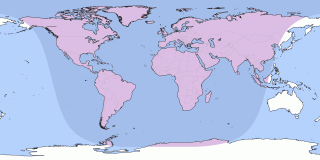Feb 10, 2017 at 6:43 pm
Max View in Mexico City, Ciudad de México
| Global Event: | Penumbral Lunar Eclipse |
|---|---|
| Local Type: | Penumbral Lunar Eclipse in Mexico City, Ciudad de México |
| Began: | Fri, Feb 10, 2017 at 6:31 pm |
| Maximum: | Fri, Feb 10, 2017 at 6:43 pm -0.036 Magnitude |
| Ended: | Fri, Feb 10, 2017 at 8:53 pm |
| Duration: | 2 hours, 22 minutes |
All times shown on this page are local time. | |
Eclipses and Transits Visible in Mexico City
| Eclipse Visibility From Mexico City | Visibility Worldwide | ||
|---|---|---|---|
| Jun 26, 2010 Partial Lunar Eclipse | Partial Lunar Eclipse |  | |
| Dec 20–21, 2010 Total Lunar Eclipse | Total Lunar Eclipse |  | |
| Dec 10, 2011 Partial Lunar Eclipse | Total Lunar Eclipse |  | |
| May 20, 2012 Partial Solar Eclipse | Annular Solar Eclipse |  | |
| Jun 4, 2012 Partial Lunar Eclipse | Partial Lunar Eclipse |  | |
| Jun 5, 2012 Venus Transit | Venus Transit |  | |
| Nov 28, 2012 Penumbral Lunar Eclipse | Penumbral Lunar Eclipse |  | |
| May 24, 2013 Penumbral Lunar Eclipse | Penumbral Lunar Eclipse |  | |
| Oct 18, 2013 Penumbral Lunar Eclipse | Penumbral Lunar Eclipse |  | |
| Apr 14–15, 2014 Total Lunar Eclipse | Total Lunar Eclipse |  | |
| Oct 8, 2014 Total Lunar Eclipse | Total Lunar Eclipse |  | |
| Oct 23, 2014 Partial Solar Eclipse | Partial Solar Eclipse |  | |
| Apr 4, 2015 Total Lunar Eclipse | Total Lunar Eclipse |  | |
| Sep 27–28, 2015 Total Lunar Eclipse | Total Lunar Eclipse |  | |
| Mar 23, 2016 Penumbral Lunar Eclipse | Penumbral Lunar Eclipse |  | |
| May 9, 2016 Mercury Transit | Mercury Transit |  | |
| Feb 10, 2017 Penumbral Lunar Eclipse | Penumbral Lunar Eclipse |  | |
| Aug 21, 2017 Partial Solar Eclipse | Total Solar Eclipse |  | |
| Jan 31, 2018 Total Lunar Eclipse | Total Lunar Eclipse |  | |
| Jan 20–21, 2019 Total Lunar Eclipse | Total Lunar Eclipse |  | |
| Nov 11, 2019 Mercury Transit | Mercury Transit |  | |
Note: Click on the date link for details in Mexico City, or the path map image for global details. Currently shown eclipse is highlighted. | |||
Next annular eclipse visible in Mexico City
